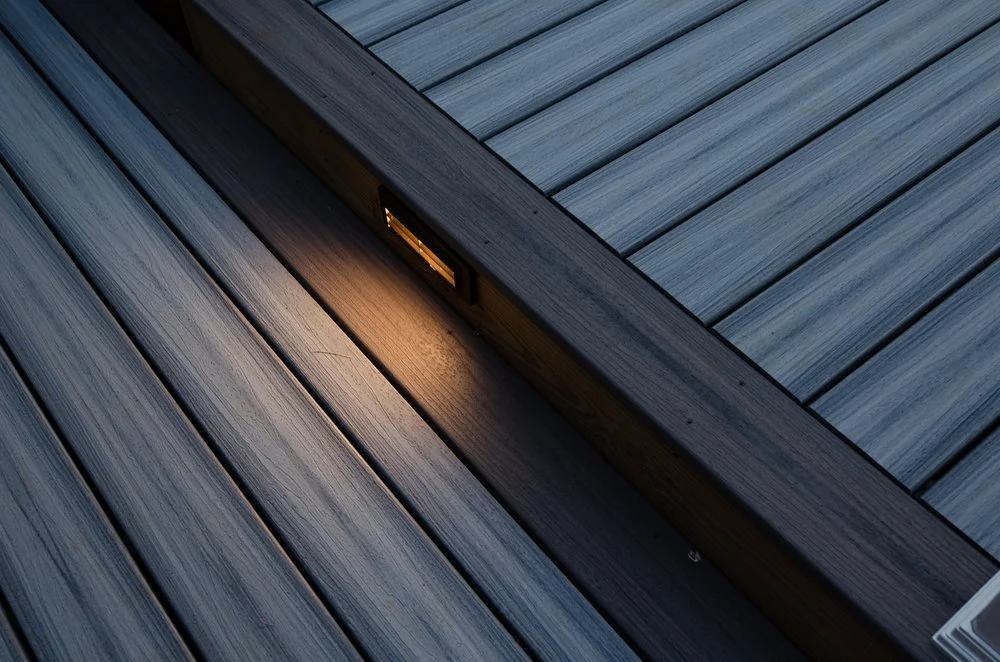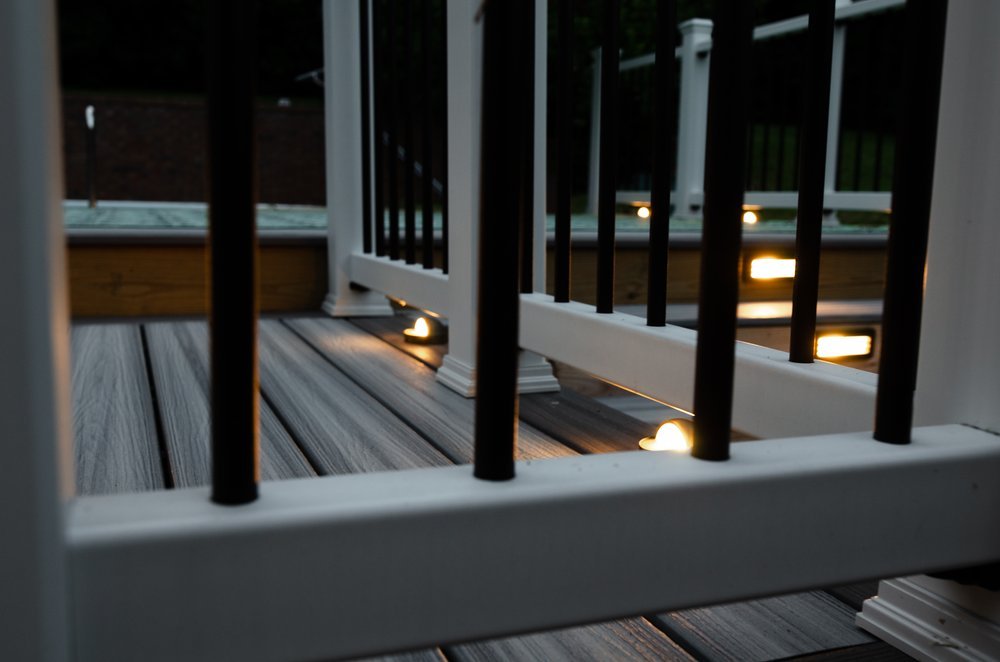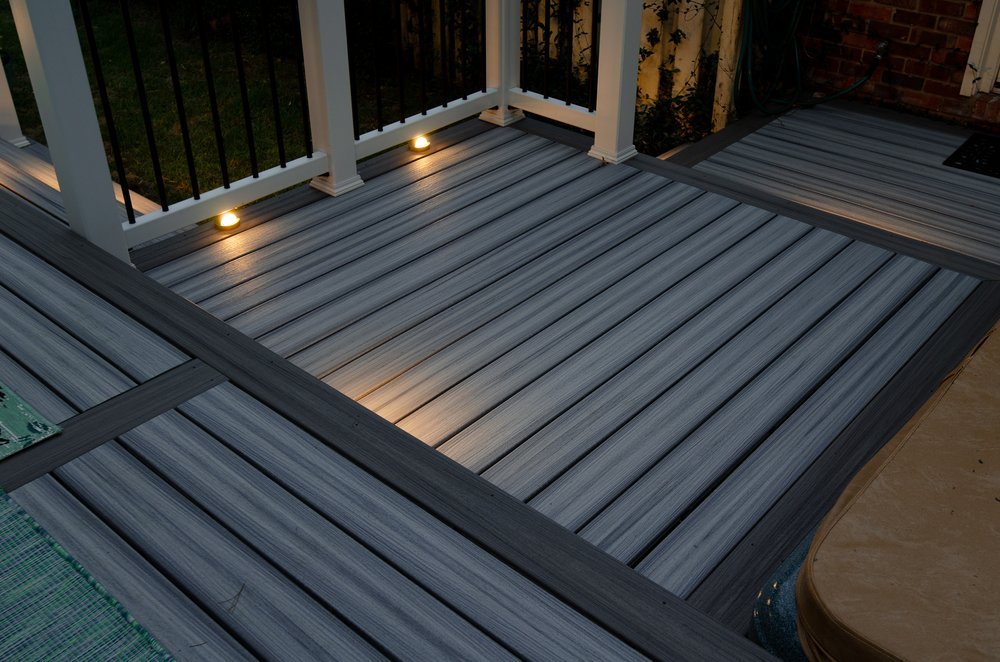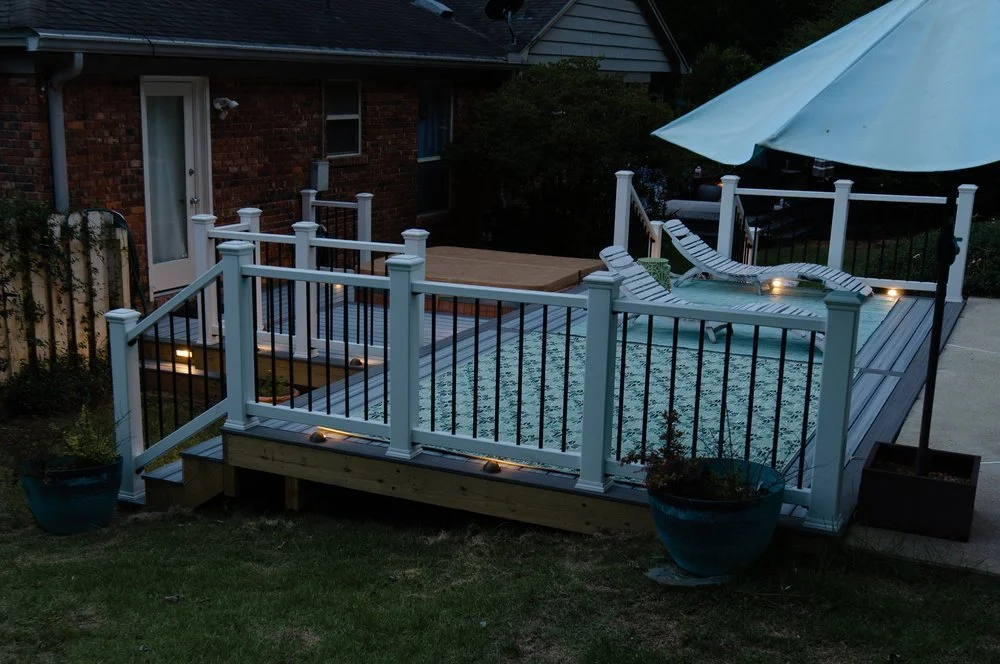Is Composite Decking a Good Idea?
Before getting into deck construction, I was wary of composite decking. I had seen too many composite decks that felt ill-suited to the natural landscape around them. Now that I have been able to work with the material from design phase through installation, I am not only convinced that composite is a good alternative, but it is absolutely the better decision in terms of durability, longevity, maintenance, environmental impact, cost, and appearance. You just need to make sure you pick the right composite boards for your overall design. Here’s the rundown of all the perks:
1. Material: Composite boards are made from a combination of wood fibers or flour and plastic, typically recycled materials. They offer a more uniform appearance and can mimic the look of natural wood. However, we always design our composite decks to look like composite decks. This is one of the chief principles that I use in landscape design. Never mimic natural materials. If you have ever walked into a garden and felt that it was kitschy, contrived, or stilted, the most likely culprit was too much mimicry and not enough nature. Grays, ambers, silvers, and other more obviously composite materials are typically the colors we use when making composite decks. These colors are neutral and clean, but they do not give any feeling of trying to be wood.
2. Durability: Composite boards are highly resistant to rot, warping, splintering, and insect damage. They do not require regular maintenance like staining or sealing. Pressure-treated pine is also durable, but requires periodic maintenance such as staining or sealing to prolong its lifespan and maintain its appearance.
Composite railings are another critical component to consider when building a new deck.
3. Longevity: Composite boards have a longer lifespan compared to pressure-treated pine. They can last for 25 to 30 years or more with proper care. Today’s pressure-treated pine deck boards in FL can start failing in 10 years or even less.
4. Maintenance: Composite boards are low maintenance. They do not require staining, sealing, or painting. Regular cleaning with soap and water is usually sufficient. Pressure-treated pine requires regular maintenance, including staining, sealing, and occasional repairs to prevent rot and decay.
5. Environmental Impact: Composite boards are typically made from recycled materials and can be considered more environmentally friendly. Pressure-treated pine involves the use of chemicals in the treatment process, which can have potential environmental impacts. Modern pressure-treated pine often uses less toxic chemicals compared to older methods, but that is also why we are seeing shorter life spans with today’s pressure-treated decking.
6. Cost: Composite boards are generally more expensive upfront compared to pressure-treated pine. However, considering the longer lifespan and reduced maintenance costs, they can be cost-effective in the long run. Pressure-treated pine is more budget-friendly initially but may require ongoing expenses for maintenance.
This multi-tiered deck used Trex “Foggy Wharf” as the primary board color and Trex “Rocky Harbor” as the accents. Not only do the accents add depth and interest to the design, but they also cue guests to watch their step at elevation changes.
7. Appearance: Composite boards offer a consistent appearance and can be found in various colors and textures. By using multiple colors and textures, you can achieve particularly unique looks that are much harder to achieve with pressure treated decking. Pressure-treated pine has a natural wood grain and can be stained or painted to achieve the desired aesthetic.
Ultimately, the best reason to go with pressure treated decking is avoiding the higher up-front cost of composite. However, if it is within budget, composite is absolutely worth the additional investment in the long run.
Brian Eltomi





